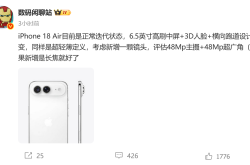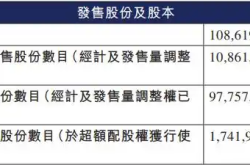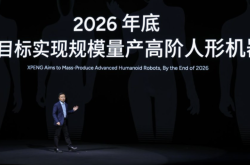Autonomous Driving Industry Observation: Competitive Landscape, Technical Routes, Problems and Challenges
![]() 10/29 2024
10/29 2024
![]() 604
604
On October 11, Beijing time, Tesla's long-awaited Robotaxi service will officially debut, marking a bold step towards Elon Musk's vision of "full self-driving" and a potential redefinition of urban transportation. Meanwhile, Baidu's Apollo Autonomous Driving Platform 10.0, equipped with the ADFM large model, is poised for release, and rumors suggest that AutoX is actively expanding its global footprint, engaging in in-depth discussions with several international companies and planning to enter overseas markets.
Looking back at the evolution of the automotive industry, from assembly line production to electrification and now to intelligence, every step has been a microcosm of humanity's modern technological progress. With Tesla and AutoX's recent moves in autonomous driving, it seems we are once again at a historical juncture.
So, what is the current competitive landscape in the autonomous driving industry? What are the technical routes? And what are the challenges ahead? Let's explore together.
01. Competitive Landscape: China and the US Excel in Different Areas
Considering the industry's development trend, as autonomous driving technology matures, Robotaxi has the potential to disrupt the automotive sector.
According to Frost & Sullivan, China's L4 and above autonomous driving penetration rate is expected to reach 9.5% by 2030, with the Robotaxi market valued at RMB 488.8 billion. Tom Narayan, an analyst at RBC Capital Markets, noted that as Robotaxi technology improves, consumers may no longer need to own private cars. In this context, Tesla's early move into Robotaxi is strategic.
Given Robotaxi's immense potential, not only Tesla but also Google, Baidu, Ruqi Limousine, and other companies are entering the fray. For instance, in June 2024, Baidu's AutoX launched fully driverless ride-hailing services in Wuhan, sparking heated online debates. Xiaopeng Motors' CEO, He Xiaopeng, also announced plans to introduce Robotaxi in 2026.
A report by China International Capital Corporation Limited highlights that China and the US lead the world in exploring Robotaxi commercialization. In the US, notable players include Tesla, Google, and Cruise, while in China, prominent names are Baidu, Pony.ai, WeRide, and Ruqi Limousine.
In the US, Google Waymo has been expanding its Robotaxi service areas since 2024, opening it up to all users in San Francisco in June. By August 20, 2024, Waymo reported over 100,000 weekly paid autonomous rides in the US, doubling from 50,000 in May.
Similarly, Cruise announced the relaunch of its Robotaxi operations in May 2024, testing vehicles with safety drivers in Arizona.
In China, Baidu's AutoX has accelerated its expansion since 2023, launching passenger testing services in 11 cities nationwide, covering all top-tier cities. As of July 28, 2024, AutoX had provided over 7 million rides nationwide, with around 899,000 rides in Q2 2024, a year-on-year increase of 26%.
02. Technical Routes: Different Approaches in Different Markets
Looking back at the historical development of autonomous driving in China and the US, a common thread emerges: early adoption by tech giants, followed by traditional automakers and ride-hailing platforms striving to catch up.
Google pioneered autonomous driving in 2009, spinning off its project into Waymo seven years later. In China, Baidu established its Deep Learning Institute in 2013, followed by Cruise, Argo, Pony.ai, WeRide, and others.
Waymo, an early player, took the costly "heavy hardware" approach, developing key sensors in-house, including lidar, millimeter-wave radars, and computing platforms. This route is financially demanding, as Musk famously quipped, "Waymo money."
In contrast, Tesla follows a software-centric path, leveraging large models and end-to-end neural networks to process images and make decisions solely through AI, known as Full Self-Driving (FSD).
In China, a more pragmatic "middle ground" approach prevails: vehicle-road cooperation. In late 2018, Baidu open-sourced its Apollo vehicle-road cooperation solution, aiming for synergy between "smart cars" and "intelligent roads."
This approach utilizes sensors and communication devices along roads to share information and coordinate driving. Its advantage lies in achieving high-precision positioning and perception on specific road segments, enhancing driving safety.
Interestingly, while Chinese and US tech companies share some similarities in their autonomous driving strategies, they also follow distinct development paths, largely due to technological disparities.
Both the "Waymo" and "Tesla" factions rely on AI algorithms and decision-making chips. The US leads in integrated circuit technology, enabling the development of high-performance automotive chips.
China, though a latecomer to autonomous driving R&D, benefits from robust domestic industrial support and policy incentives. China is vigorously promoting new infrastructure projects such as 5G, satellite internet, data centers, and intelligent transportation, embracing 5G LTE-V2X technology standards for road upgrades to facilitate the smooth transition to 5G-v2X.
It's too early to determine the superiority of any particular technical route, as new technologies often spawn diverse development paths, as seen in the PC and mobile internet eras. Each path has the potential to succeed before reaching the finish line.
03. Challenges: Commercialization and Legal Liability
Shifting from theoretical discussions to reality, autonomous driving faces numerous challenges, primarily commercialization and legal liability.
Commercialization hinges on cost reduction. Musk has repeatedly emphasized Robotaxi and FSD's potential to offer the lowest cost per mile. At the 2019 Autonomy Day, he estimated that while human-driven taxis cost $2-3 per mile, Robotaxis could cost as little as $0.18 per mile.
Moreover, Musk envisions Tesla Robotaxis not only serving their owners but also earning money as taxis, potentially generating $30,000 in annual profits for owners. This upends the traditional Robotaxi business model of self-ownership, purchase, and operation.
According to China Fortune Securities, Robotaxis are projected to become profitable around 2027. Cost reductions will stem from declining hardware costs and remote safety driver expenses due to improved AI capabilities. On the revenue side, increased operational hours and lower empty-running rates are expected to balance costs and profits by 2027.
Regarding regulation, besides data security, legal liability for autonomous driving accidents is a significant concern.
Some European scholars argue that current smart machines lack moral reasoning and decision-making capabilities. Even advanced AI, with human-like perception and control, is still a machine programmed to execute tasks.
In practice, AI is not recognized as a legal entity capable of exercising rights, fulfilling obligations, or assuming responsibilities under most legal systems.
In the world's first fatal L3+ autonomous driving accident, the test driver was criminally liable. On March 18, 2018, an Uber self-driving vehicle hit and killed a pedestrian in Arizona while in L4 mode. After a five-year trial, the safety driver, Rafaela Vasquez, received three years of probation, becoming the first person convicted in an autonomous driving accident.
The National Transportation Safety Board concluded that while Uber's system failed to detect the pedestrian, the safety driver's distraction by watching a mobile video was the primary cause, underscoring human error over technical failure.
04. Conclusion: The Ultimate Competition Lies in Computing Power and Profitability
Ultimately, the autonomous driving industry's competition boils down to two core factors: computing power and profitability.
With software architectures and algorithm models no longer secrets, the key lies in sufficient computing power and data to train algorithms.
Robotaxi's widespread adoption depends on both mature autonomous driving technology and reduced vehicle costs. Tesla and other automakers leverage vertical integration to cut costs, while tech giants like Baidu continuously optimize their systems. Behind this is the need for financial support, translating into sufficient sales to fund computing power and data for autonomous driving development.
In essence, without computing power, profitability is a pipe dream; without profitability, computing power remains an unfulfilled aspiration.








